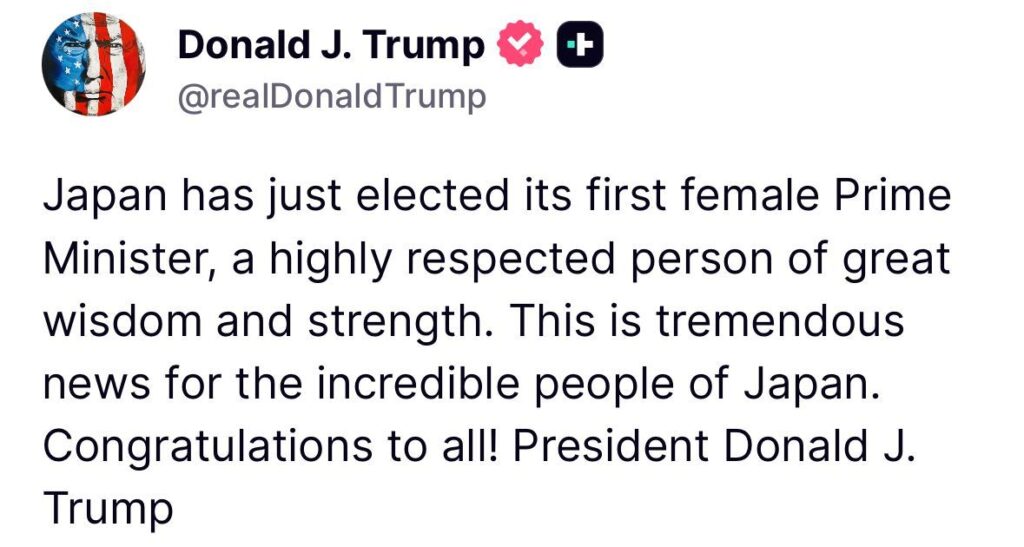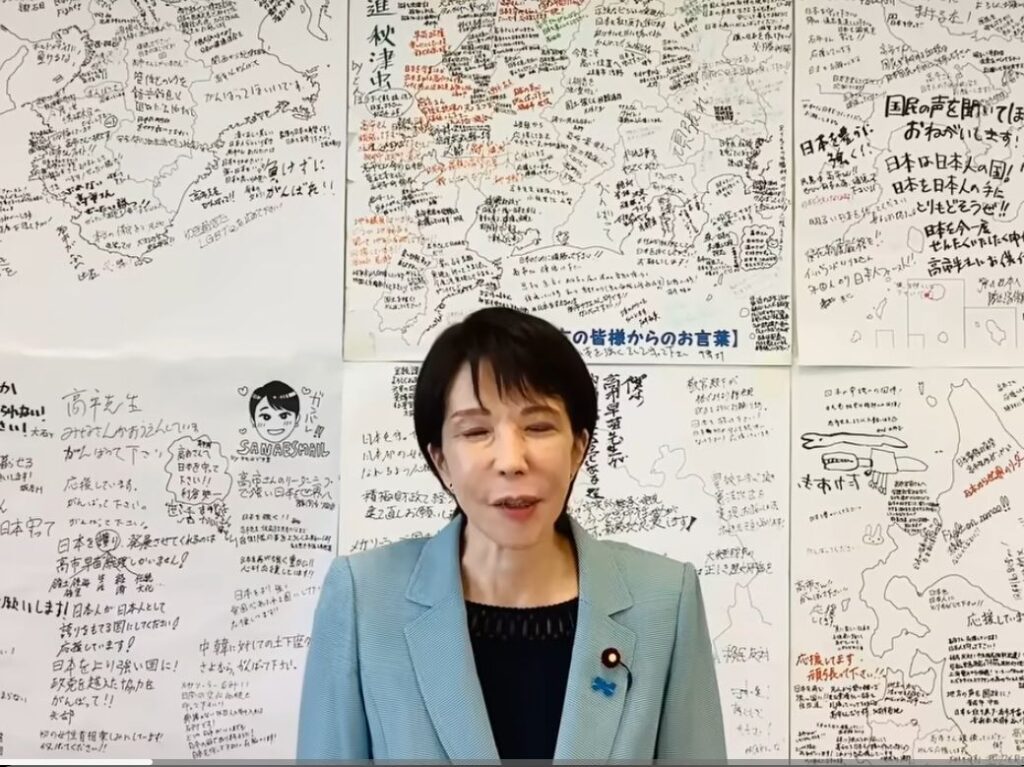TOKYO, Oct 7, 2025 – Sanae Takaichi, the hawkish conservative who clinched the leadership of Japan’s ruling Liberal Democratic Party (LDP) just days ago, wasted no time in forging international bonds on Tuesday. In a post on X, formerly Twitter, Takaichi expressed profound gratitude for “warm words of congratulations” from U.S. President Donald Trump, underscoring her intent to supercharge the U.S.-Japan security partnership amid rising tensions in the Indo-Pacific.

“I was very pleased to receive such warm words of congratulations from @realDonaldTrump,” Takaichi wrote in English, adding in Japanese that she looks forward to collaborating with the president “to make our 🇯🇵🇺🇸 Alliance even stronger & more prosperous, and to advance a Free and Open Indo-Pacific.”
Takaichi’s victory on October 4 came in the wake of Shigeru Ishiba’s abrupt resignation following the LDP’s bruising electoral setbacks, which cost the party its majorities in both houses of parliament. The 64-year-old lawmaker from Nara, long seen as a protégé of the late Prime Minister Shinzo Abe, edged out rivals in a party vote that signaled a pivot toward harder-line conservatism. Her ascent reflects voter frustration with recent scandals and economic woes, propelling her toward likely confirmation as Japan’s next prime minister.
A staunch security advocate, Takaichi has pledged to ramp up defense spending to 2% of GDP by 2027—well ahead of the current timeline—while pushing reforms to enhance military interoperability with U.S. forces. She has repeatedly emphasized bolstering the U.S.-Japan alliance as her top foreign policy priority, including trilateral cooperation with South Korea and partnerships with nations like Australia to fortify regional stability. Echoing Abe’s vision, Takaichi champions the “Free and Open Indo-Pacific” (FOIP) framework, a strategy designed to counter China’s assertive maneuvers through alliances such as the Quad grouping of the U.S., Japan, India, and Australia.
Trump’s outreach, reportedly including a personal message praising her “strength and vision,” arrives at a pivotal moment. Analysts see it as an early win for Takaichi’s diplomacy, potentially paving the way for a late-October summit focused on defense burden-sharing, trade agreements, and joint exercises. “This is the strongest signal yet of alignment between Tokyo and Washington under new leadership,” said Hiroshi Nakajima, a foreign policy expert at Waseda University.
Yet Takaichi’s agenda faces headwinds at home. Inflation-ravaged households demand relief through tax cuts and subsidies, but with opposition parties controlling key committees, economic bills could stall in parliament. Her coalition with the pacifist-leaning Komeito party is also strained; the junior partner has bristled at Takaichi’s revisionist historical views and her visits to the Yasukuni Shrine, a site honoring war dead including convicted war criminals, which have long irked neighbors Seoul and Beijing.
As Japan navigates these domestic minefields, Takaichi’s Trump rapport could prove a diplomatic lifeline. “The U.S. alliance isn’t just a shield—it’s the sword we need for a rules-based order,” she said in a pre-election speech. With her post garnering over 99,000 likes and millions of views within hours, public enthusiasm appears high, though critics warn her nationalist bent risks isolating Japan further in Asia.
Takaichi’s formal investiture as prime minister is expected later this month, marking the first time a woman has led the LDP since 2006. For now, her digital high-five with Trump sets an optimistic tone for what promises to be a turbulent tenure.

